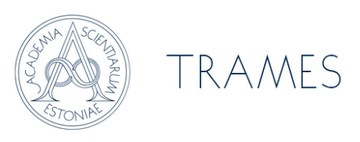STRATIGRAPHY OF CULTURAL INTERACTION IN EURASIA BASED ON COMPUTING OF FOLKLORE MOTIFS
STRATIGRAPHY OF CULTURAL INTERACTION IN EURASIA BASED ON COMPUTING OF FOLKLORE MOTIFS
Author(s): Yuri E. BerezkinSubject(s): Cultural history, Customs / Folklore, Human Geography, Regional Geography
Published by: Teaduste Akadeemia Kirjastus
Keywords: folklore databases; interactions spheres; cultural borders; prehistoric cultural contacts; Eurasian folklore and mythology;
Summary/Abstract: The article operates with two categories of units selected from folklore and mythological texts. These are the A-motifs (images and episodes related to cosmology and etiology) and B-motifs (episodes related to adventures and tricks). The areal distribution of the A-motifs reflects the existence of interaction spheres that probably emerged in deep prehistory mostly thanks to the displacement and movement of people themselves and not only as a result of the exchange of narratives between populations. The areal distribution of the B-motifs was mostly due to cultural interaction though the movement of people also played its role. The comparison of the data on the distribution of the A- and B-motifs suggests that a change in the system of intercultural connections took place in Eurasia after ca. A.D. 500. The Caucasus (with the adjacent areas) that was earlier connected with Europe was absorbed into the same interaction sphere as Mongolia and Southern Siberia. A set of motifs shared by southern and northern traditions of Eastern Eurasia seems to be as early as the peopling of the New World.
Journal: TRAMES
- Issue Year: XX/2016
- Issue No: 3
- Page Range: 217-227
- Page Count: 13
- Language: English

